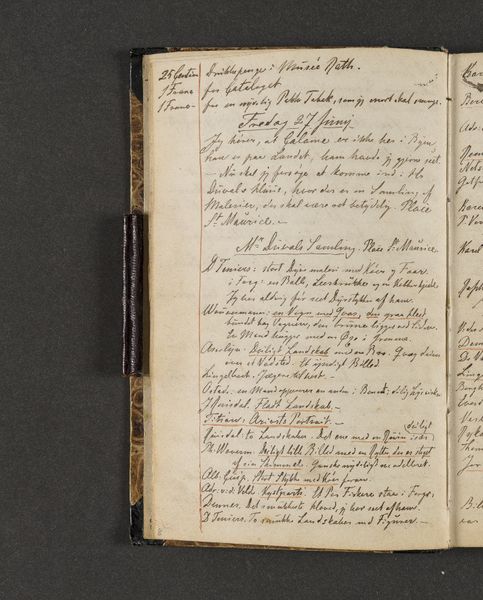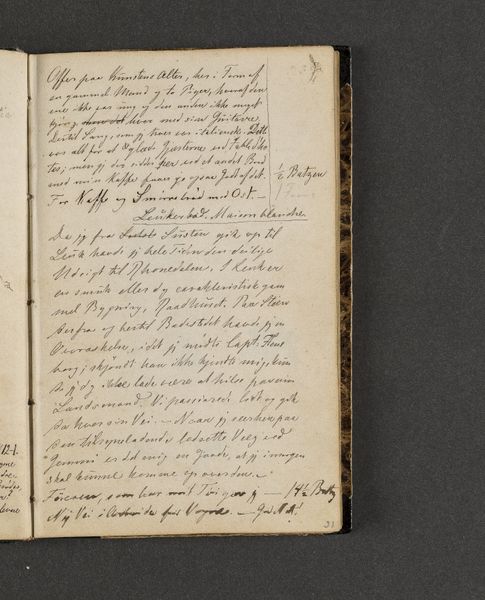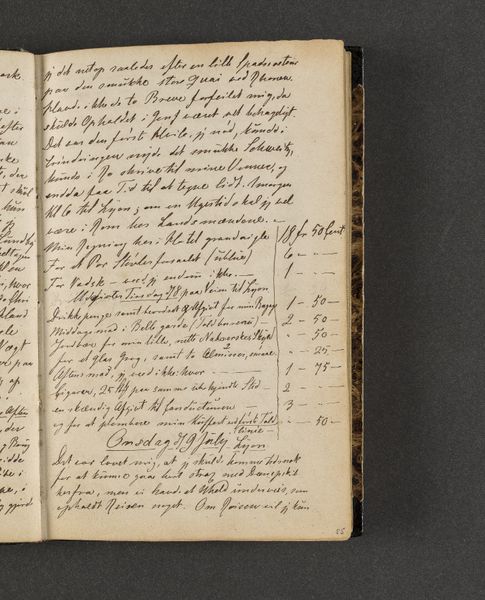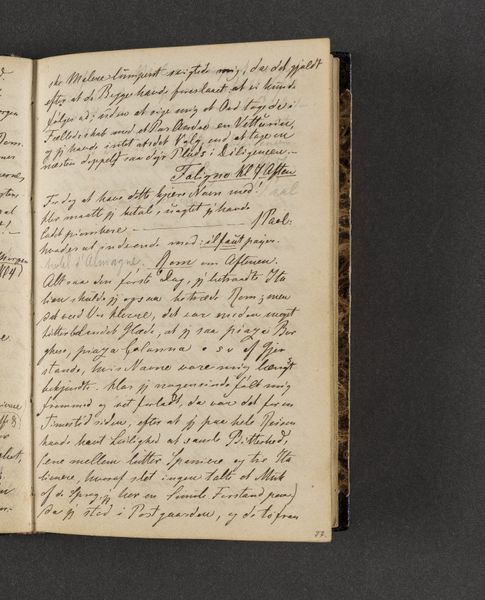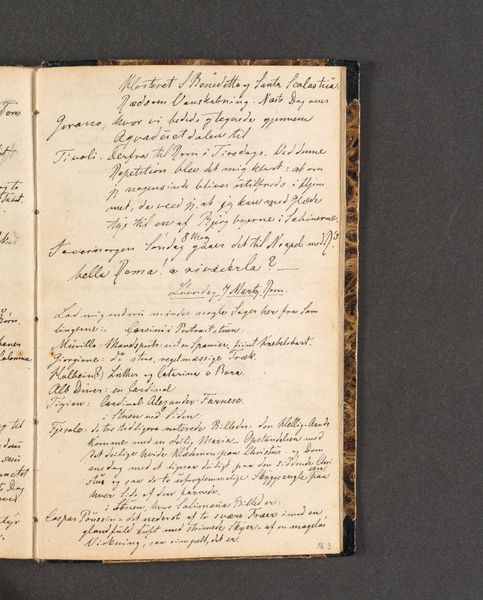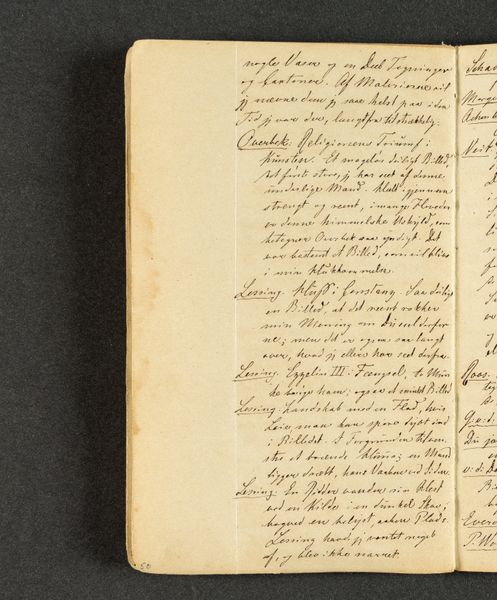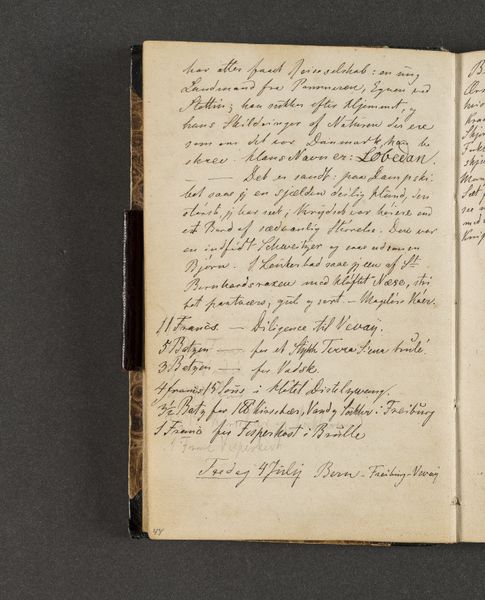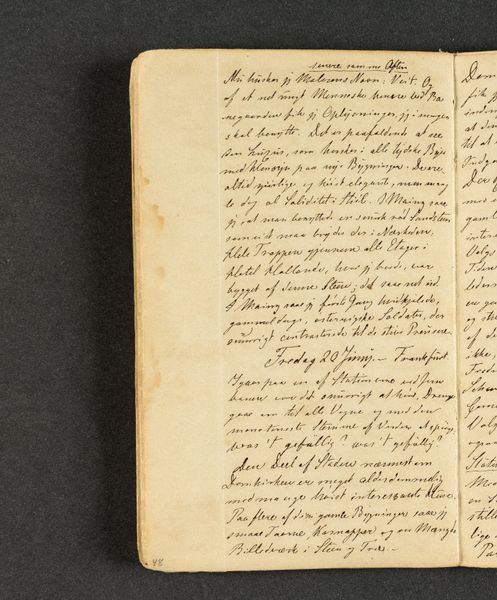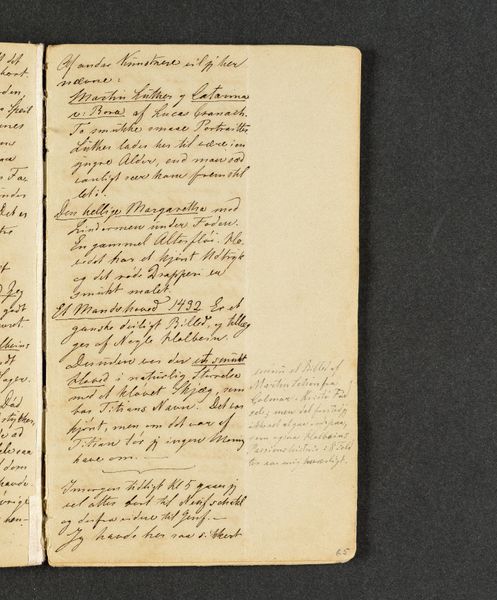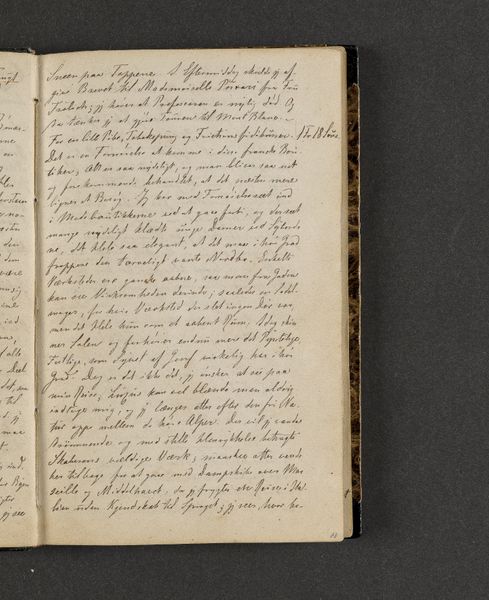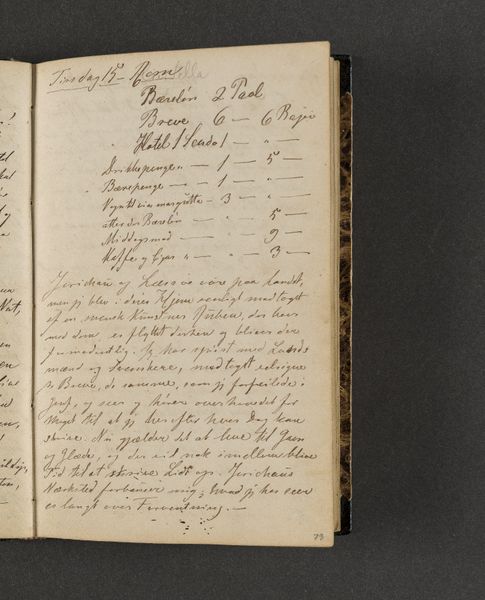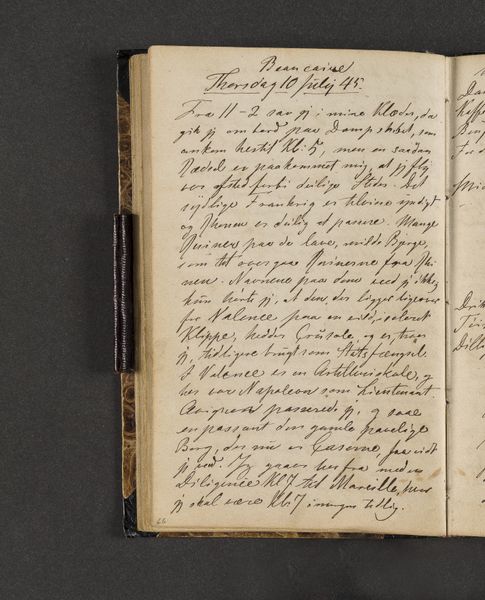
drawing, paper
#
drawing
#
paper
Dimensions: 161 mm (height) x 103 mm (width) x 11 mm (depth) (monteringsmaal)
Curator: Here we have "Rejsedagbog," a drawing on paper by Johan Thomas Lundbye, created around 1845. What are your initial thoughts looking at this, considering it's essentially a page from a travel journal? Editor: It’s quite dense, isn’t it? Overwhelming at first glance, a collection of handwritten thoughts that requires real effort to unpack. I wonder about the narrative embedded here. Does this represent a personal journey, a social observation, or something else entirely? Curator: Lundbye, as we know, was deeply interested in the way visual culture transmits cultural memory. Even in a seemingly private document like this, we find him engaging with artistic precedents, listing names, commenting on compositions and techniques. It suggests a dialogue, even within the confines of a personal travelogue, between past masters and his own present experience. It's not just recording what he sees but also how what he sees resonates within a cultural and artistic tradition. Editor: Precisely. And considering the historical context of 1845, a time when national identity and artistic expression were deeply intertwined in Denmark, I see the travel journal itself becoming a potent symbol. This is about formulating an artistic voice in relation to the landscapes and cultural landmarks he encounters. Curator: Yes, the act of recording and reflecting in this way would become central to his artistic identity. Notice how he even refers to "old images." Perhaps a prompt from which to evolve his personal style and interpretations. Editor: It makes me wonder, though, about the audience for such a document. Was it intended solely for his eyes, or was there an implicit expectation of future readers? The very act of writing in a clear, albeit hurried, hand suggests a level of consciousness about its potential public role. How would this intimate diary page interact with, for example, public museum exposure of a kind such as this? Curator: That tension between private and public is key, I think. The Romantic artist's search for authentic experience, recorded diligently, yet inevitably shaped by the gaze, the expectation of recognition, if only posthumously. Lundbye perhaps understood, consciously or not, that even personal jottings contribute to a broader cultural narrative. Editor: It's fascinating to think about how these intimate reflections then find their way into institutions like the Statens Museum for Kunst. A journey, quite literally, from the personal to the public sphere, transforming a simple notebook page into a document that reveals not just one man's travels, but the broader currents of a society and culture. Curator: A fascinating transformation indeed, reminding us of how seemingly ephemeral observations gain a resonance far beyond their immediate context. Editor: Yes, the quiet revolution of a travel journal – bearing witness, sparking conversation, and echoing through time.
Comments
No comments
Be the first to comment and join the conversation on the ultimate creative platform.
